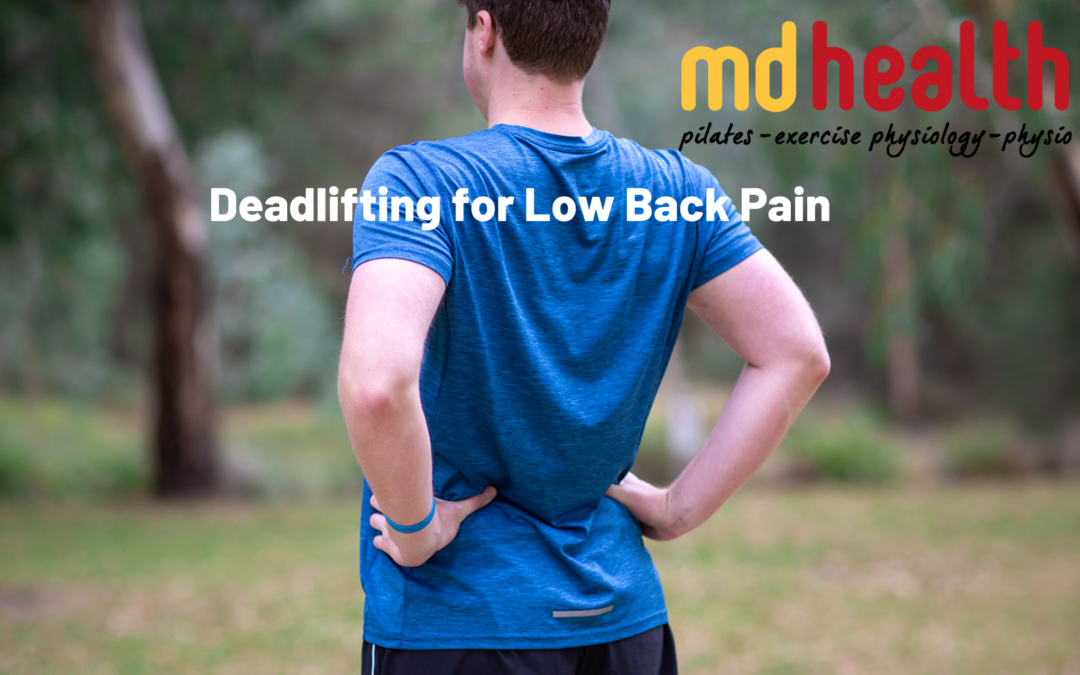Deadlifting to Treat Low Back Pain
The classic scenario – someone has been fighting medium to long term low back pain, and everything they have tried hasn’t fixed it. Rest, medication, massage, manual therapies, trips to physios and basic exercises haven’t helped. It hurts to exercise, and it hurts at work.
One of the first questions you ask about someone’s pain is: “What activities or movements make the pain worse?”.
A common answer: “Lifting”.
When it hurts to lift heavier things, we tend to avoid doing anything that makes us experience pain. This tends to have a de-training effect on our ability to lift things! This particularly impacts muscles that “brace” our spine and allow it to distribute load evenly.
Deadlifting is often an ostracized movement that can be seen as a cause of low back pain, not a treatment. Many doctors even instruct their low back pain patients to never deadlift or lift heavy loads again! I often shake my head at this, as it is further leading to de-training of a movement that is so critical to everyday life.
If done correctly and set up specifically for low back pain patients, the deadlift can be one of the most effective exercises in treating low back pain.
How can deadlifting help low back pain? The answer is twofold:
The physiological effect: Lifting with a solid technique improves the spine’s ability to take and distribute load. Lifting improves our low back and gluteal muscles to better work together. This helps the spine to take and distribute load. Lifting heavy things has a hypertrophic effect – our muscles adapt and grow stronger.
The psychological effect: Fear of injury is often a driving factor of a patient’s low back pain. When exposed to a modified deadlift for the first time under low load, and when completed pain free, you can often see this fear dropping away almost immediately. This is incredibly empowering to a patient! This helps them understand their pain and overcome their fear. As you build up to heavier and heavier loads, the fear is almost alleviated completely. This translates into their everyday life as well! Whether that be moving potted plants out in the garden without concern or picking up their children/grandchildren.
Transitioning from low back pain to a deadlift:
This is often the hardest thing to start on. Once you find the perfect position to start, improvement comes fairly rapidly.
What is a patient’s hip hinge like? Hip hinge is the ability to maintain a neutral spine whilst bending from the hips.
Does the patient stand back up using their gluteals? For a good deadlift to occur the glutes must be the main driver of the movement. The patient should still be aiming to maintain a relatively neutral spine.
I often start patients who haven’t deadlifted before (or who haven’t in a long time) doing an elevated deadlift or “rack pull” movement. This can either be starting with the bar at an above-knee level, or slightly below-knee level. Once they are comfortable with that position and are lifting with good technique, I start to increase the load/weight gradually.
Increasing range:
I aim to transition patients to deadlifting from off the floor as soon as tolerable. Again, the amount of hip hinge range/control they have is important here! There are other “stances” that can be used to get back to lifting from the floor, such as the sumo stance. Sumo stance is basically having the feet wider, with your grip inside your knees rather than outside. This allows for more movement through the hips and requires less hip hinge range.
In summary:
Deadlifting should be seen as an extremely useful tool in a physio’s arsenal when treating people with low back pain. Deadlifting is great for building up load tolerance and reducing fear/anxiety around movement! It also helps give patients empowerment and confidence in their body.
Seek out assistance from a physiotherapist, exercise physiologist or suitably qualified exercise professional to find ways to stay active. Let them guide you in using exercise in overcoming low back pain.
Do you have any questions?
- Call us on (03) 9857 0644 or (07) 3505 1494 (Paddington)
- Email us at admin@mdhealth.com.au
- Check out our other blog posts here
Our clinical staff would be happy to have chat if you have any questions.



